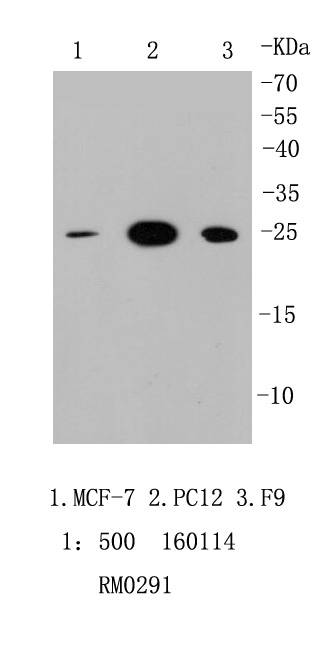
Fig1: Western blot analysis of HMGB1 on different cell lysates using anti-HMGB1 antibody at 1/1,000 dilution. Positive control: Lane 1: MCF-7 Lane 2: PC12 Lane 3: F9
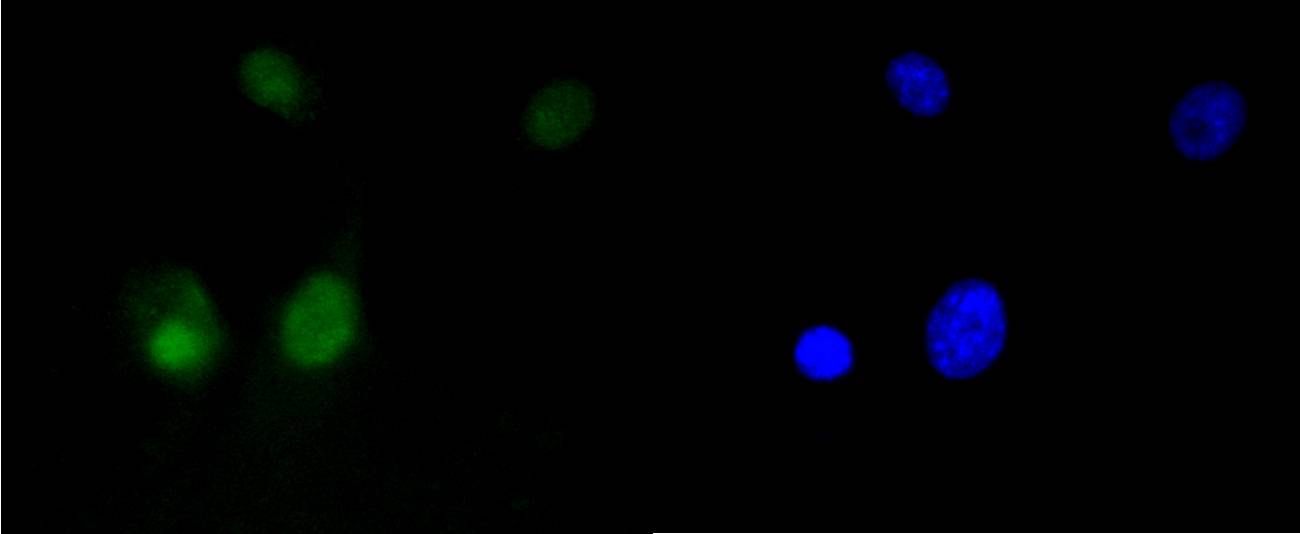
Fig2: ICC staining HMGB1 in NIH/3T3 cells (green). The nuclear counter stain is DAPI (blue). Cells were fixed in paraformaldehyde, permeabilised with 0.25% Triton X100/PBS.
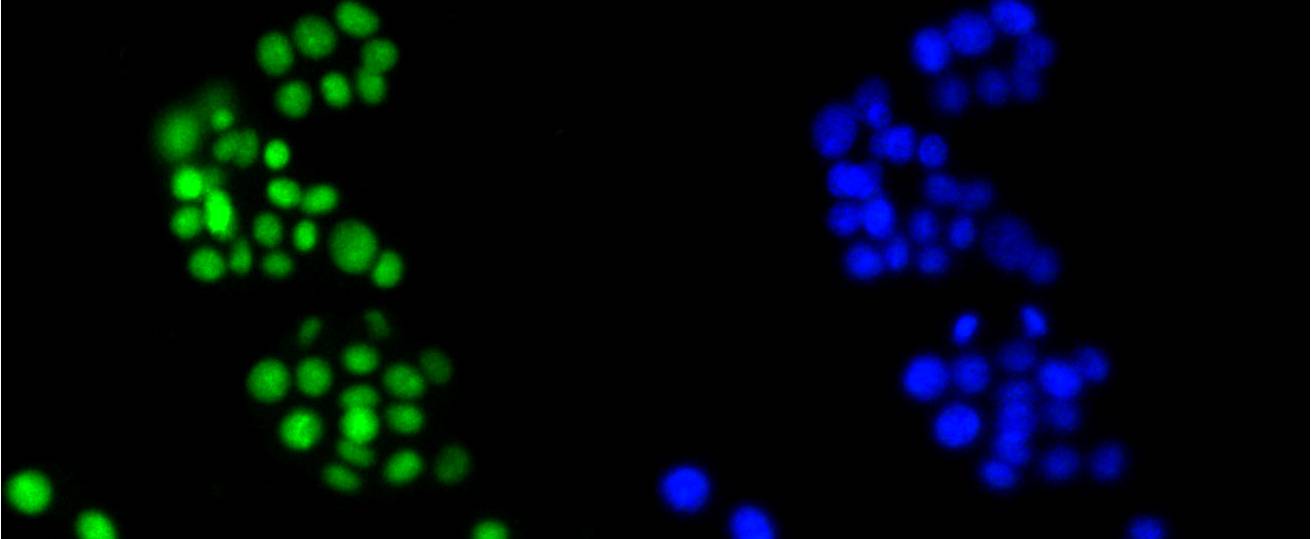
Fig3: ICC staining HMGB1 in MCF-7 cells (green). The nuclear counter stain is DAPI (blue). Cells were fixed in paraformaldehyde, permeabilised with 0.25% Triton X100/PBS.
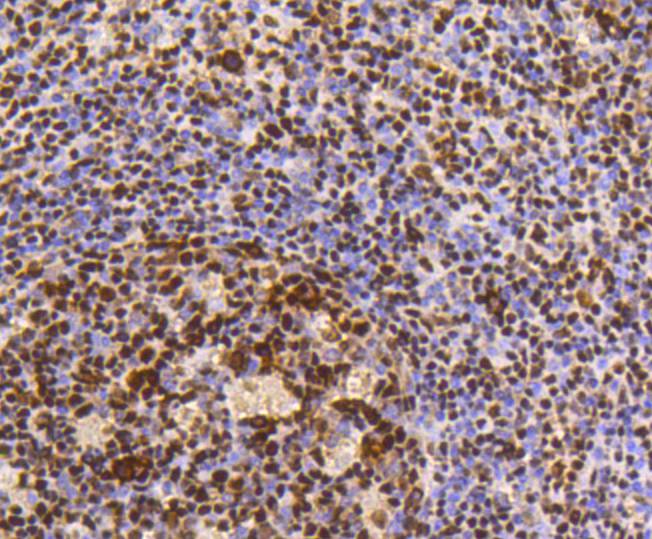
Fig4: Immunohistochemical analysis of paraffin-embedded human tonsil tissue using anti-HMGB1 antibody. Counter stained with hematoxylin.
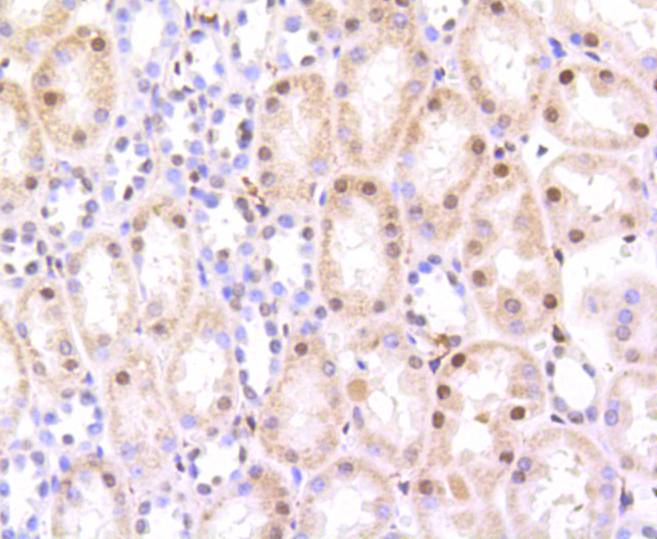
Fig5: Immunohistochemical analysis of paraffin-embedded human kidney tissue using anti-HMGB1 antibody. Counter stained with hematoxylin.
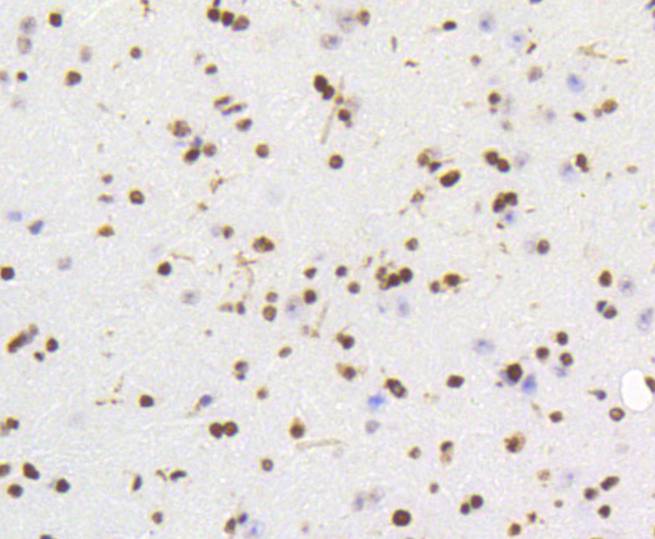
Fig6: Immunohistochemical analysis of paraffin-embedded mouse brain tissue using anti-HMGB1 antibody. Counter stained with hematoxylin.
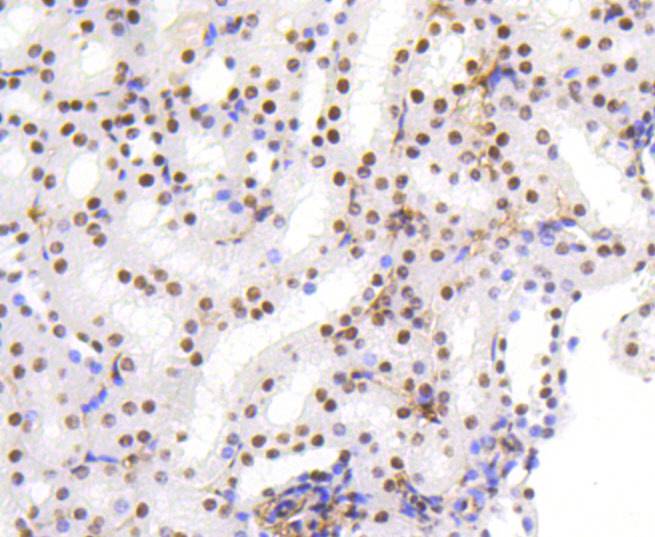
Fig7: Immunohistochemical analysis of paraffin-embedded mouse kidney tissue using anti-HMGB1 antibody. Counter stained with hematoxylin.
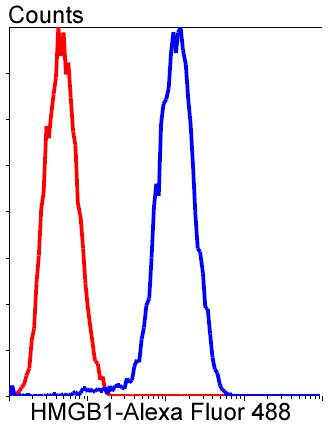
Fig8: Flow cytometric analysis of PC-12 cells with HMGB1 antibody at 1/50 dilution (blue) compared with an unlabelled control (cells without incubation with primary antibody; red). Alexa Fluor 488-conjugated goat anti-rabbit IgG was used as the secondary antibody..
Product Profile
| Product Name | HMGB1 [SA39-03] |
|---|---|
| Antibody Type | Primary Antibodies |
| Product description |
|
| Immunogen | recombinant protein |
Key Feature
| Clonality | Monoclonal |
|---|---|
| Isotype | IgG |
| Host Species | Recombinant rabbit |
| Tested Applications | |
WB:1:1,000-1:5,000 ICC:1:50-1:200 IHC:1:50-1:200 FC:1:10-1:100 |
|
| Species Reactivity | |
| Concentration | 1 mg/mL. |
Target Information
| Alternative Names | Amphoterin antibody
Chromosomal protein nonhistone HMG1 antibody DKFZp686A04236 antibody High mobility group 1 antibody High mobility group box 1 antibody High mobility group protein 1 antibody High mobility group protein B1 antibody high-mobility group (nonhistone chromosomal) protein 1 antibody HMG-1 antibody HMG1 antibody HMG3 antibody HMGB 1 antibody HMGB1 antibody HMGB1_HUMAN antibody NONHISTONE CHROMOSOMAL PROTEIN HMG1 antibody SBP 1 antibody Sulfoglucuronyl carbohydrate binding protein antibody |
|---|---|
| Molecular Weight(MW) | 25 kDa |
| Cellular Localization | Cytoplasm, Nucleus, Cell membrane, Secreted, Chromosome |
Database Links
| SwissProt ID | P09429 P63158 P63159 |
|---|
Application
-

Application
Fig1: Western blot analysis of HMGB1 on different cell lysates using anti-HMGB1 antibody at 1/1,000 dilution. Positive control: Lane 1: MCF-7 Lane 2: PC12 Lane 3: F9
-

Application
Fig2: ICC staining HMGB1 in NIH/3T3 cells (green). The nuclear counter stain is DAPI (blue). Cells were fixed in paraformaldehyde, permeabilised with 0.25% Triton X100/PBS.
-

Application
Fig3: ICC staining HMGB1 in MCF-7 cells (green). The nuclear counter stain is DAPI (blue). Cells were fixed in paraformaldehyde, permeabilised with 0.25% Triton X100/PBS.
-

Application
Fig4: Immunohistochemical analysis of paraffin-embedded human tonsil tissue using anti-HMGB1 antibody. Counter stained with hematoxylin.
-

Application
Fig5: Immunohistochemical analysis of paraffin-embedded human kidney tissue using anti-HMGB1 antibody. Counter stained with hematoxylin.
-

Application
Fig6: Immunohistochemical analysis of paraffin-embedded mouse brain tissue using anti-HMGB1 antibody. Counter stained with hematoxylin.
-

Application
Fig7: Immunohistochemical analysis of paraffin-embedded mouse kidney tissue using anti-HMGB1 antibody. Counter stained with hematoxylin.
-

Application
Fig8: Flow cytometric analysis of PC-12 cells with HMGB1 antibody at 1/50 dilution (blue) compared with an unlabelled control (cells without incubation with primary antibody; red). Alexa Fluor 488-conjugated goat anti-rabbit IgG was used as the secondary antibody..
| Positive Control | NIH/3T3, MCF-7, PC12, F9, human tonsil tissue, mouse kidney tissue,mouse brain tissue, human kidney tissue. |
|---|---|
| Application Notes | WB:1:1,000-1:5,000 ICC:1:50-1:200 IHC:1:50-1:200 FC:1:10-1:100 |
Additional Information
| Form | Liquid |
|---|---|
| Storage Instructions | Store at +4℃ after thawing. Aliquot store at -20℃ or -80℃. Avoid repeated freeze / thaw cycles. |
| Storage Buffer | 1*TBS (pH7.4), 1%BSA, 40%Glycerol. Preservative: 0.05% Sodium Azide. |
- Related products
- Human ALANINE ELISA Kit OM642712
- Human β-ALANINE ELISA Kit OM642711
- Camel Growth Hormone (GH) ELISA Kit OM642709
- Camel Insulin-like growth factors 1 (IGF-1) ELISA Kit OM642708
- Human HIV-1 p24 core protein (HIV-1 p24) antibody ELISA Kit OM642706
-
- ASSAY KITS
-
- SERUM
2013 © Omnimabs , All Rights Reserved.

